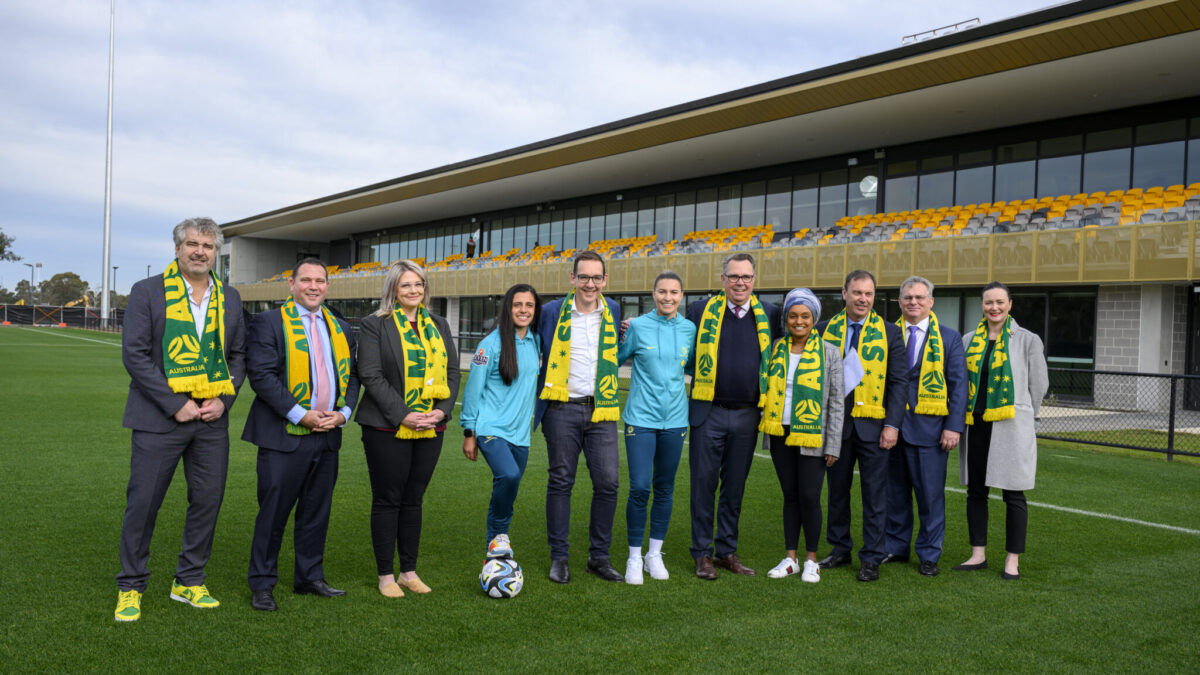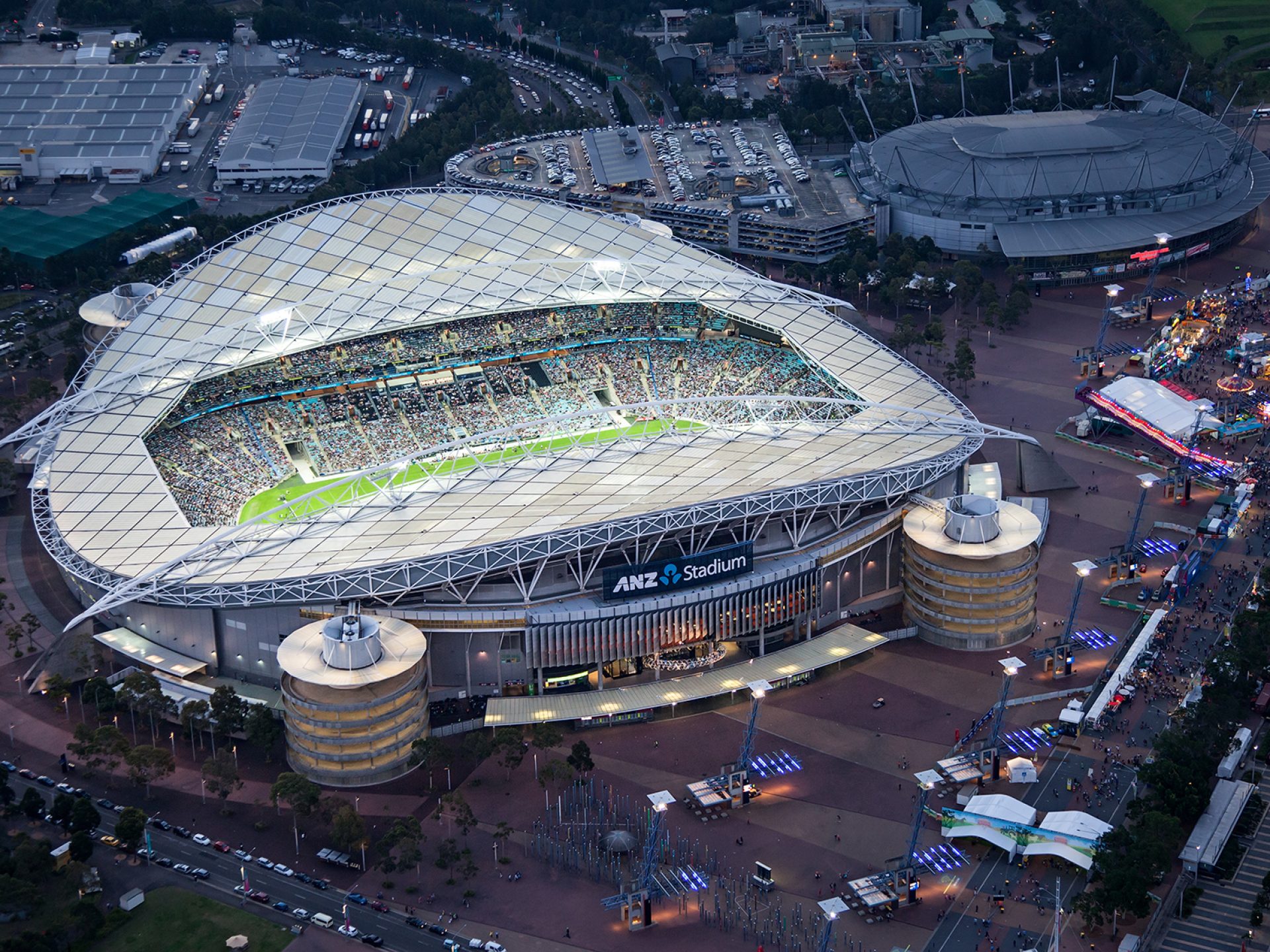News

July 20, 2023

The celebration of global football has landed on the shores of Australia and New Zealand with the countries playing co-host to this year’s 2023 FIFA Women’s World Cup.
Held every four years, the global event is a major milestone for football fans and the female players who will be showcasing their sporting talent in some of the most enduring homes of football.
The Women’s World Cup has grown from a 12-team tournament in 1991 and the continued growth of the women’s game – and the tournament itself – has been striking, with a combined 1.12 billion viewers tuning in to watch the games in France, setting a record audience for the event. At the time, FIFA President Gianni Infantino said the 2019 FIFA Women’s World Cup was more than a sporting event, but a cultural phenomenon attracting more media attention than ever before, providing a platform for women’s football to flourish in the spotlight.
Now, from 20 July and up to 20 August, 10 locations across Australia and New Zealand will welcome an incredible 32 nations and the tournament seems likely to set new records in terms of audience.
Following a comprehensive review of stadiums in this region, FIFA were able to select pre-existing, permanent venues, some built between 10 and 20 years ago and designed with a sustainable legacy in mind: they were able to host global events as well as national and major community sports.
Five of the 10 stadiums in this year’s Women’s World Cup were designed by leading global architecture and design firm, Populous.
Accor Stadium (Stadium Australia) in Sydney/Gadigal, Suncorp Stadium (Brisbane Stadium) in Brisbane/Meanjin, Eden Park in Auckland/Tamaki Makaurau, Forsyth Barr (Dunedin Stadium) in Dunedin/Ōtepoti and Sky Stadium (Wellington Stadium) in Wellington/Te Whanganui-a-Tara, are all ready to host international football, having been designed to meet FIFA requirements.
And as contributors to FIFA’s Technical Recommendation and Requirements of Football Stadiums (5th edition) and as a lead contractor to FIFA’s recently released Football Stadiums Guidelines, Populous has had a hand in producing the global benchmark for best-practice in football stadium designs to host matches at this level. The report provides best-practice guidance that facilitates sustainable football infrastructure development, be it environmental, social or economic.
Senior principal and director Richard Breslin has extensive design experience on major stadium projects in Australia and globally, including Wembley Football Stadium, Forsyth Barr and Stadium Australia.
“Designing sports and entertainment venues around the world, as well as our expertise in event overlay design and consultancy for major global sporting events, means our team is uniquely positioned to provide a holistic response to the hosting of World Cups and other global events.
“The five venues we designed that are hosting games in the 2023 Women’s World Cup have stood the test of time.”
“It’s going to be wonderful to see them full of fans and beamed around the world as part of this event. For fans, attending these international events and seeing your national team compete, it’s just magic.
“Accor Stadium in Sydney was created as a multipurpose Olympic stadium with an athletics track, but it was also designed to adapt over time. It was designed to ‘shrink’ from the largest ever stadium to host an Olympic Opening Ceremony and to be flexible enough to host a range of codes, events and concerts.
“After my time on Stadium Australia, I was then part of the team designing the new Wembley Stadium, which carried an enormous weight of responsibility.
“Wembley is a place that is synonymous with English football and is incredibly emotive for so many people around the world. Steeped in history, our work was to design the now 100-year-old stadium into a 21st century venue.
“State of the art facilities were designed for the next generation of players, performers and spectators, the geometry of the new, open four-tier seating bowl achieved excellent sightlines across the pitch while replicating the “Wembley Roar” and the improved comfort and flexibility to accommodate both sporting and entertainment has reinforced its position as the best known, and most loved, football stadiums in the world,” Breslin said.
New Zealand’s largest rectangular indoor event venue, Forsyth Barr in Dunedin, has the essential ingredients in the creation of a stadium; flexibility and legacy.
As project director Richard Breslin said, “the revolutionary design of Forsyth Barr provided multifunctionality and flexibility, so it is perfectly positioned to be used by its community all year round.
“It has 20,000 permanent seats, 11,000 temporary seats and a 37-metre internal roof height, which combined with the angled seating pitch, means spectators are incredibly close to the action.
“The unique permanent roof is clad in EFTE, a transparent polymer or plastic, which is light, enclosed and translucent, allowing maximum sunlight onto the pitch, so that the grass keeps growing but the fans are protected from the elements and the action goes on whatever the weather.
“The permanent roof means Forsyth Barr is a true hybrid between a highly efficient, well-functioning football/rugby stadium and an entertainment venue,” Breslin said.
Large-scale venue design is core work for Populous, and, whether it is stadia, arenas or convention, exhibition and entertainment venues, designing for a global home of football requires the right degree of functionality to create something experiential.
Recounting her time working on the post-Olympic transformation of Accor Stadium, senior principal and architect Belinda Goh reflects.
“Working on such a large-scale venue is what hooked me, at the time Accor Stadium had just hosted the Sydney 2000 Olympics which still now, holds so many special memories and moments we’ve celebrated together.
“We recognised the impact the sheer size of this venue would have on its immediate environment and how it would re-shape the city of Sydney.”
“It was exciting to then work on the legacy design of the stadium to transform its seating to reduce from 110,000 to 81,500 and add sliding tiers over the field of play for its long term use to immediately become a venue that was purpose fit for major world events like Bledisloe Cup, Rugby World Cup, international music tours while creating a way for Sydney to win more major events, such as the 2023 FIFA Women’s World Cup,” Goh said.
In the countdown to the 2023 FIFA Women’s World Cup, Accor Stadium’s athlete change rooms, official’s area and media conference room underwent a multimillion-dollar upgrade by Populous to provide fully accessible, equitable and gender-neutral new player change rooms, warm up and recovery spaces for Accor Stadium.
“Stadia are big pieces of infrastructure and thus their “embodied” energy is a key consideration in terms of a sustainable design and future redevelopment.
“The adaptive reuse of the building’s existing structure and construction materials allowed for a dedicated stadium while reducing the energy going into redeveloping new ones,” Goh said.
After Sydney, Belinda moved to London, to become the lead architect on the Emirates Stadium and in that time became a big Arsenal fan.
“Arsenal commissioned Populous to design a new, bigger stadium on a 17-hectare site in a predominantly residential area in North London, and we had to ensure it knitted into the existing fabric of its neighbourhood. In the end we came up with a design for the stadium that neither dominated the skyline nor overshadowed the surrounding area, and we were also able to reduce the area of the stadium itself, freeing up outside areas to be used as public spaces. By locating the stadium more than 100 metres from the nearest homes, we were also able to minimise noise and light impacts on the neighbouring community,” Goh explains.
As well as designing stadia for atmosphere, fan engagement, revenue generation and safety and security, stadia design has evolved to make a home ground as intimate yet intimidating as possible for an away team.
Arsenal’s multi award-winning Emirates Stadium and Suncorp Stadium in Brisbane are good examples of stadiums where atmosphere is a tangible and essential element. The intimacy, and the noise that comes with it, is as daunting for the visiting team as it is inspiring for the home side.
Senior principal and director, Chris Paterson was a project architect on the Suncorp Stadium, 20 years ago which just recently celebrated 20 million people through the turnstiles. Additionally, he was the project architect on Eden Park in Auckland too.
“The more intense and close-in, the better the atmosphere; essentially it is driven by how tightly the bowl can be configured, ensuring that the fan at the back of the stadium is as close as they possibly can be to the action on the field.
“Suncorp Stadium’s versatility is a reflection of designing for legacy, for flexibility and for widespread use by as many people as possible.”
“It is an enduring stadium precinct which continues to thrive, connect to its community and provide memory-making moments,” Paterson explains.
“We have learnt, and continue to learn, tremendous lessons from our involvement in the design of every one of these stadia including the five that will be hosting this year’s matches in Australia and New Zealand.
“We are very proud that Populous-designed stadia are playing such a pivotal role in making the Women’s World Cup a successful tournament.
“It is incredibly exciting to see these five venues, each of which had their own unique design stories and opportunities, come together to feature on the biggest footballing stage. We look forward to many more amazing moments at all of them,” Paterson said.
What these stadia have in common is twofold: they were designed to evolve over time, and they are renowned as atmospheric. That’s the Holy Grail of a live sporting experience whether its athletics, Australian Football League, football/soccer or rugby – it’s always all about the atmosphere.
Populous-designed 2023 FIFA Women’s World Cup Stadiums in order of completion:
Accor Stadium, Sydney/Gadigal, Australia
Sky Stadium, Wellington/Te Whanganui-a-Tara, New Zealand
Suncorp Stadium, Brisbane/Meanjin, Australia
Eden Park, Auckland/Tamaki Makaurau, New Zealand
Forsyth Barr, Dunedin/Ōtepoti, New Zealand
Lorem ipsum dolor sit amet consectetur, adipisicing elit. Non facere corporis et expedita sit nam amet aut necessitatibus at dolore enim quis impedit eius libero, harum tempore laboriosam dolor cumque.
Lorem, ipsum dolor sit amet consectetur adipisicing elit. Illo temporibus vero veritatis eveniet, placeat dolorem sunt at provident tenetur omnis, dicta exercitationem. Expedita quod aspernatur molestias eum? Totam, incidunt quos.